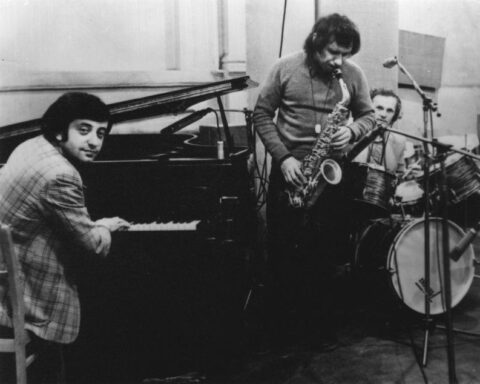I forgot what prompted me to send for a sample issue of Cadence, circa 1988, but once I did, I was hooked. Printed on plain stock paper, the magazine was filled with numerous reviews of CDs and videos. It included Bob Rusch’s blunt, sardonic columns about the music business, a detailed interview or two and until recent years, a vast center section with countless CDs and LPs available from their parent company, North Country Distributors (which will continue operations). It also proved to be one of the launching pads for my career in jazz journalism.
Sadly, Rusch recently announced in the first quarter issue that Cadence would cease publication with the October/November/December 2011 issue. According to the publisher, subscriptions peaked about a decade ago, and the switch to a larger quarterly edition from a monthly magazine did not halt the decline in subscribers.
Asked about what prompted him to launch Cadence, Rusch responded: “No one was covering independents, and the small independent jazz mags that had existed had folded.” It was a challenge to keep a magazine going based primarily on subscriptions alone, but Rusch believed in his mission: “We never went after advertising — for us it was about the music.” Of course, potential advertisers quickly recognized that Rusch allowed his writers complete freedom, so a negative review was never rejected, even of a CD by an advertising label or artist. It was a refreshing attitude, in contrast to editors who are afraid of offending anyone.
The drop in subscriptions, rising mailing and printing costs, plus the labor-intensive demands of assembling each issue, all were contributing factors to ceasing publication. But Rusch said, “Even with sickness or death, we never missed an issue or deadline — and real (and knowledgeable) people have always answered the phone during business hours. Our typical writer has been with us for around 12 years. Alan Bargebuhr and David Franklin have contributed for over 25 years, several others have been with us for over 15 years.” The honesty of Cadence reviews, plus its extensive coverage of many small, independent, import and self-released CDs, will be missed in the world of jazz journalism, though Bob will likely prefer to describe his magazine as covering “Creative Improvised Music,” which has been on it masthead from the beginning.






Another valuable component of Cadence was (or is, not defunct yet) the many interviews with musicians, most of them conducted by Bob Rusch. When I first met Bob, ages ago, he was that rara avis, a major collector of jazz periodicals (much later, he donated many of these to the Institute of Jazz Studies). And the regular pubiication of Cadence indexes, a service greatly appreciated by IJS!
Thanks for all that!!
The Passing of Cadence, Part 3
It seems very odd to already be speaking of Cadence magazine in the past tense, but this way we won't have to revise our words later, an efficiency which I bet Bob Rusch will appreciate.
First off, the good news that we need not lament the passing of Cadence's famed center section (which was what finally drove me to my first pair of eyeglasses, when either my arms got too short or the type too small), for its electronic successor has been on line since the book went quarterly, and will remain there after the passing of the print edition. The listings there have few peers in their extent or variety, and in the pre-web era constituted the most comprehensive one-stop source for keeping up with new recordings beyond the major labels.
In a way, Cadence's record sales department took what the New Music Distribution Service was doing to the next level, and in doing so succeeded in building enough of a national and international client/subscriber base to remain viable in the longer term. What both operations shared was commitment to a higher priority of making the music available rather than making judgments about which music they would make available. Altruism was, admirably, a guiding force for both. Times were different then. People who had no business doing so were starting businesses and some, like Cadence, lasted.
Design-wise, the magazine never transcended its humble beginnings, and that could cause gnashing of teeth to those for whom visual aesthetics are a priority. The reproduction quality of photographs – always in black and white – often left much to be desired. Yet all that was little more than window dressing for the primary content: the words, the opinions. What a refreshingly different editorial approach, to not only allow writers their own voices, but to encourage them to speak their minds!
Defining the line where this practice began to embrace fringe thinking is debatable, but the fact that Cadence let its writers cross that line is in any case commendable, presaging in some ways the wider tendency in media to do so since the advent of so-called web journalism. And the division between the editorial and advertising sections of the magazine was, commendably, always made clear.
Rusch's own editorial screeds could be like the proverbial fingernails on a chalkboard. Their strength came from far more often possessing righteous indignation than being merely self-righteous. No cows were sacred. He repeatedly laid bare the wink-and-nod quid pro quo continuum linking extent and nature of coverage with magnitude of advertising in other jazz publications thought respectable by many, evidently including many of us, whose works have been published in the pages of some or all of those same publications.
When a flagship magazine refused to run his dinky little ad for subscriptions, Rusch cried foul and named names. I have to admire him for that, even if such an act had about as much chance of making a difference as Canute ordering the tides to not turn.
I like to hope the spirit of the writing in Cadence – to which, by the way, in the interest of full disclosure, you should know I was never a contributor, but was, for more than 20 years, an avid reader – will continue to inspire us all to avoid bowdlerizing ourselves in any way. There are editors to do that for us, but Bob Rusch is not one of them.
- Patrick Hinely